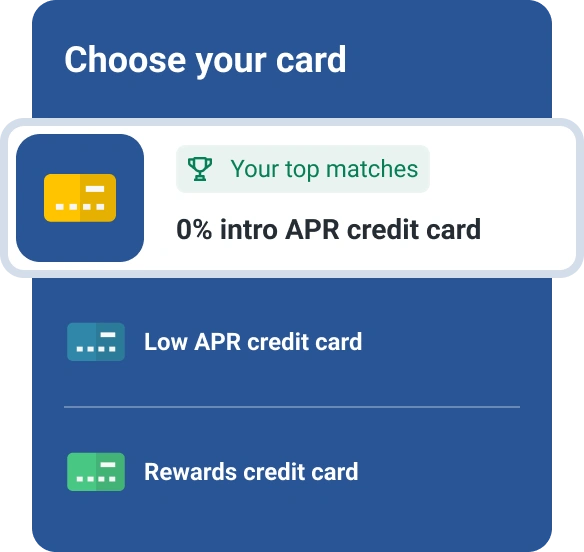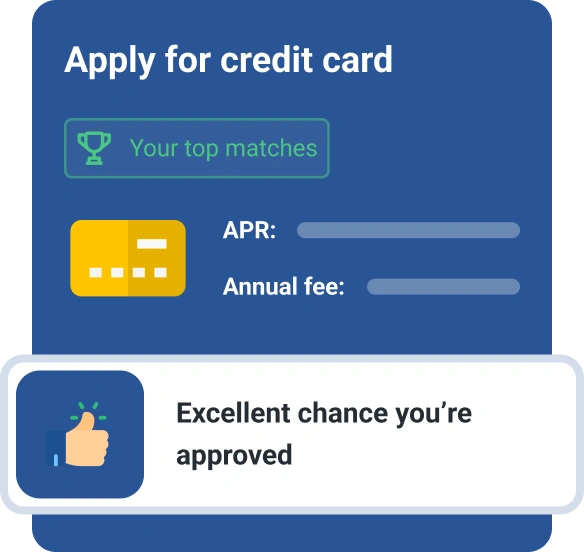How Do Fed Interest Rate Cuts Impact Credit Cards?
Quick Answer
When the Fed reduces interest rates, credit card issuers also lower rates on cards with variable APRs. Exact timing varies, but many card issuers will update the APR within a month or two.

When the Federal Reserve lowers the federal funds rate, credit card issuers typically follow suit. With two Fed rate cuts so far in 2025 and more expected in 2026, that means reduced rates on your credit cards could be just around the corner.
Consumers in the United States collectively have over $1 trillion in outstanding credit card debt, according to Experian data, and lower credit card rates may bring much-needed financial relief to many credit card holders. To help you decide the best approach to your finances, let's explore how the federal funds rate influences credit cards and steps you can take if your interest rate decreases.
How the Fed Sets Interest Rates
The federal funds rate, the interest rate banks charge when they lend money to each other overnight, is set by the Federal Open Market Committee (FOMC), a committee within the Federal Reserve.
The FOMC meets several times a year to decide whether to raise, lower or maintain the federal funds rate. These decisions are based on economic conditions. When inflation is running high, for example, the FOMC may raise the federal funds rate to make borrowing more expensive, which helps slow spending and bring prices back under control.
Banks consider the federal funds rate when deciding the prime rate, which is charged to their most creditworthy customers. The prime rate is usually 3% higher than the federal funds rate. For example, if the federal funds target rate is 4% to 4.25%, the prime rate would be 7.25%.
How Fed Rate Cuts Affect Credit Card APRs
When the Federal Reserve cuts interest rates, borrowing typically becomes cheaper across the economy, including on credit cards. But the effect depends on the type of credit card you have and how your annual percentage rate (APR) is structured.
Variable-Rate Credit Cards
Most credit cards have variable interest rates tied to the prime rate, which moves up or down along with the Fed's benchmark rate. When the Fed lowers rates, your card's APR will usually follow suit.
That said, issuers aren't required to match rate cuts immediately or by the same amount.
Fixed-Rate Credit Cards
Fixed-rate credit cards are rare, and they don't automatically get cheaper when the Fed cuts interest rates. Since their APRs aren't tied to the prime rate, your interest rate will stay the same unless your card issuer decides to lower it voluntarily.
How Soon Do Credit Card Rates Change?
If the prime rate drops after a Fed rate cut, your credit card's variable APR may decrease as well. Most issuers adjust rates shortly after the prime rate changes—typically within one or two billing cycles—but the exact timing can vary by lender.
Review your cardholder agreement to see how your issuer links your APR to the prime rate and how quickly changes take effect.
Learn more: What to Do if Your Credit Card Issuer Changes Your Account Terms
Steps to Take When Credit Card APRs Decrease
Lower credit card APRs offer an opportunity to improve your finances. Here are some steps you can take if your rate drops.
- Pay your balance down sooner. A lower interest rate means more of your payment goes toward lowering the total balance rather than interest. Increase your payment to knock out your balance quicker. If you have balances on multiple credit cards, focusing on the card with the highest interest rate will offer the most savings.
- Shop for a new credit card. Since your credit card rate is assigned based on your creditworthiness at the time you applied, you may qualify for a lower interest rate, especially if you've improved your credit. Shopping for a new card could mean you find a lower interest rate and even some new perks.
- Ask for a lower interest rate. Alternatively, you can contact your current card issuers to request a lower interest rate. With an improved credit score and a pattern of making on-time payments, you may be more likely to receive a lower rate.
- Reassess your budget. Adjust your budget to reflect changes to your credit card payments if, for instance, you're making lower payments or you've paid off a balance due to lower rates. This gives you an opportunity to see how much flexibility you have in your budget now that you're spending less on credit card payments.
- Save for emergencies. Use the money you're saving on credit card payments to boost your emergency fund. With money in savings, you're less likely to rely on credit cards the next time you face an unexpected expense.
Learn more: Reasons to Pay More Than the Minimum on Your Credit Card
Ways to Pay Off Your Credit Card Debt Faster
If you're committed to paying off your credit card debt, here are some strategies to pay off your debt quickly.
Debt Snowball Method
With the debt snowball approach, you pay off your credit cards by making extra payments on the smallest balance and minimum payments on all your other credit cards. As you pay off each balance, you'll focus on the next smallest balance, and so on. This approach keeps you motivated since you're paying off accounts quickly in the beginning.
Debt Avalanche Method
The debt avalanche method is similar to the debt snowball approach, except that you focus on the highest interest rate balance first rather than the lowest balance. This approach can help you maximize your interest savings, while the debt snowball method may be better if you want to focus on eliminating balances.
Balance Transfer Credit Card
With a good credit score, you may be able to consolidate your credit card balances with a balance transfer credit card that offers an introductory 0% APR rate. If you're approved, you'll get a temporary break on interest on the balances you transfer. Just know that you'll likely have to pay a balance transfer fee of 3% to 5% of the transferred balance, so do the math to be sure that the interest savings is worth the fee.
Learn more: Pros and Cons of Balance Transfer Cards
Debt Consolidation Loan
By combining your credit card balances with a debt consolidation loan, you can pay off your debt with a fixed monthly payment and repayment schedule. In some cases, you'll have a lower monthly payment, but higher long-term interest may be the trade-off.
Cut Back on Discretionary Spending
Reducing your spending frees up money that you can use to pay down your credit card balances faster and avoid accumulating additional interest.
Start by reviewing your budget and recent transactions to identify nonessential expenses, such as dining out, streaming subscriptions or impulse purchases, that you can temporarily cut or scale back. Even small reductions can add up over time.
Learn more: How Long After You Pay Off Debt Does Your Credit Improve?
The Bottom Line
When the Fed lowers interest rates, you'll likely see a drop in your credit card APR, too, though it won't be right away. Take advantage of the lower rate by paying down your credit card balance or shopping around for a new credit card. To get started, check your credit report and FICO® ScoreΘ for free to see where you stand so you can focus on credit cards that fit your credit profile.
Don’t apply blindly
Apply for credit cards confidently with personalized offers based on your credit profile. Get started with your FICO® Score for free.
See your offersAbout the author
Ben Luthi has worked in financial planning, banking and auto finance, and writes about all aspects of money. His work has appeared in Time, Success, USA Today, Credit Karma, NerdWallet, Wirecutter and more.
Read more from Ben

